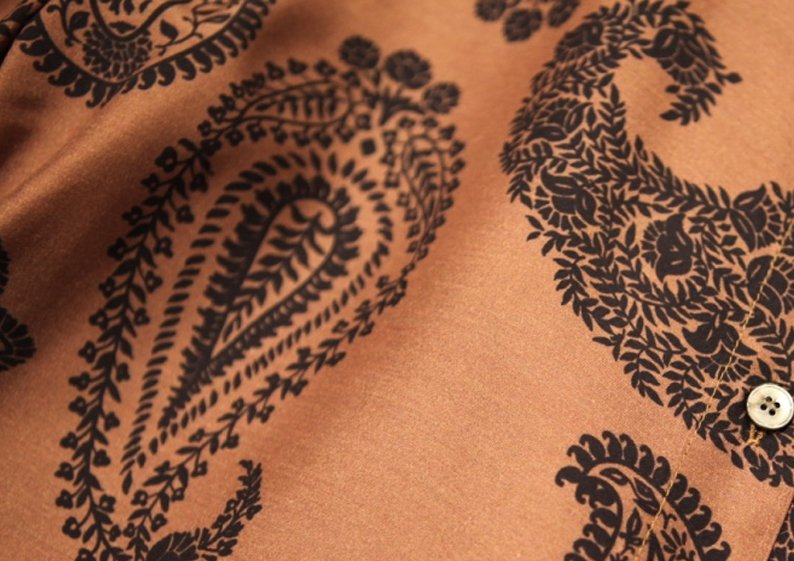
The Paisley pattern is undoubtedly one of the most widely known and loved of all motifs in the entire repertoire of decorative design. While most people are familiar with its distinctive teardrop shape, not everyone is aware that it takes its name from the town of Paisley in the west of Scotland. The story of how this Scottish town gave its name to an Indo-Persian design is an intriguing mix of political, technical, social and cultural factors. The crucial element, however, is the interaction between the two great traditions of European and Indian textile design and technology.
During the second half of the eighteenth century, Paisley was one of the leading towns in Europe for the manufacture of fine silk gauzes and figured muslins. These local products were in demand in all the fashion circles of Europe. The Paisley weavers, who created these fabrics were famous, not only for their technical and artistic skills, but also for their high level of culture and expertise in many other fields. During this period, known as 'the golden age' of handloom weaving, the weavers were well paid and could afford to take some time off to pursue other interests. They put this to good use by forming clubs and societies to educate themselves in literature, music, gardening, entomology, beekeeping among many other topics. Many of them, inspired by Robert Burns from nearby Ayrshire, wrote poetry.
At this time also, the Kashmir shawl was introduced into Europe, and quickly became a symbol of status and taste among the wealthy classes, as depicted in the portraits of Ingres and his contemporaries. The decorative borders on these shawls consisted of a row of the conventionalised floral motif, known as the 'buta'. The coloured wefts forming this pattern were inserted individually by the weaver's hand. Using this weaving technique, it took over a year for two men to produce a single shawl. This method, combined with the use of rare pashmina yarns, naturally resulted in a scarce and very expensive fashion commodity.
European manufacturers attempted to meet the increasing demand by producing imitations of the oriental shawl, using western technology. However, to match the dexterity of the human hand required an extraordinary level of hand weaving technology and expertise. Paisley was among the few places in Europe who could meet these demands. Eventually a successful imitation was produced at a fraction of the cost of the original. This new fabric, a combination of Indian iconography and European technology, was known appropriately as the 'imitation Indian' shawl.
Paisley produced these shawls throughout most of the nineteenth century, during which time the concept of the Kashmir shawl and its motif were developed into many different forms, far beyond the original prototype. These new shawls were produced in such variety and abundance by the local weavers and designers that the shawl itself became synonymous with the town, and eventually became known as the Paisley shawl rather than the 'imitation Indian'. Similarly, the characteristic motif, while retaining its original oriental essence, became known as the Paisley pattern, after the Scottish town which produced it with such exuberance in the nineteenth century.
Words by Dr. Dan Coughlan
Dr. Dan Coughlan worked as a traditional handloom weaver before studying textile design at the National College of Art and Design, Dublin. He is now Curator of Textiles at Paisley Museum. ThePaisley Museum holds what is thought to be the largest collection of shawls in the world. A selection is permanently on display in the Shawl Gallery. The Textile Collection also contains many pattern and sample books showing an enormous range of Paisley patterns from the nineteenth century. A number of working looms can be seen in the Loom Gallery.
Our TOAST paisley pieces have been hand drawn by our fabric designer who has used traditional motifs as her inspiration.
Sign upto be the first to hear about our new collections, events and our latest magazine articles.
Add a comment